- Benefits of Shaping Cherry Trees with Bushes
- Simplified Harvesting Process for Cherry Trees
- 1. Prune the tree
- 2. Train the branches
- 3. Thin out the fruit
- 4. Provide support
- 5. Harvesting
- Understanding the Growth Patterns of Cherry Trees
- 1. Seedling Stage
- 2. Vegetative Growth
- 3. Flowering Stage
- 4. Fruit Development
- 5. Dormancy
- Selecting the Right Cherry Varieties for Bush Training
- Techniques for Training Cherry Trees into Bushes
- Pruning Cherry Trees: Essential Tips for Shaping
- 1. Time it Right
- 2. Remove Dead and Diseased Branches
- 3. Shape the Central Leader
- 4. Thin Out Overlapping Branches
- 5. Maintain an Open Center
- 6. Prune for Fruit Production
- 7. Use Proper Pruning Tools
- 8. Consult with Experts
- Maintaining a Healthy Cherry Tree Bush
- Regular Pruning
- Fertilization
- Watering
- Pest and Disease Control
- Weed Control
- Monitoring and Proactive Care
- Reaping the Rewards of a Well-Shaped Cherry Tree Bush
- Question-answer:
- What is the best way to shape a cherry tree for simplified harvesting?
- When is the best time to start shaping a cherry tree as a bush?
- What are the benefits of shaping a cherry tree as a bush?
- How should I prune a cherry tree to shape it as a bush?
- Can any type of cherry tree be shaped as a bush?
- Video: Nanking Cherry – Care, harvest, recipe, preserving for winter.
When it comes to growing cherries, many gardeners opt for traditional tree shapes. However, there is another option that can simplify the harvest and make cherries more accessible: shaping the tree into a bush. While this method may require some additional care and training, the benefits are well worth the effort. By shaping the cherry tree into a bush, gardeners can create a more compact and manageable plant, making it easier to harvest cherries without the need for ladders or other equipment.
The process of shaping a cherry tree into a bush starts with careful pruning. This involves removing the central leader, which is the main vertical branch of the tree. By doing so, the tree’s energy will be focused on lateral branches, resulting in a fuller, bushier shape. Pruning should be done in late winter or early spring, before the tree begins to produce new growth. It’s important to make clean cuts and remove any dead or diseased branches to ensure the overall health of the tree.
After pruning, the tree will need to be trained and supported to maintain its bush shape. Gardeners can use stakes or trellises to help support the branches and keep them from drooping under the weight of the fruit. As the tree grows, it’s important to continue pruning and shaping the branches to maintain a compact shape. This can be done by cutting back the branches to encourage new growth and removing any crowded or crossing branches.
Shaping a cherry tree into a bush not only simplifies the harvest, but it also encourages better airflow and sunlight penetration, which can help prevent disease issues. Additionally, the compact shape of the tree can make it easier to protect the fruit from birds and other pests. With the right care and attention, a cherry tree shaped into a bush can provide a bountiful harvest of delicious cherries for years to come.
Benefits of Shaping Cherry Trees with Bushes
The practice of shaping cherry trees with bush forms offers several benefits:
- Simplified Harvest: By shaping cherry trees with bush forms, the height of the tree can be controlled, making it easier to reach and harvest the cherries. This eliminates the need for ladders or other equipment, reducing the risk of falls and injuries.
- Increased Yield: Shaping cherry trees with bushes allows for better light penetration and airflow, resulting in increased fruit production. The optimized canopy structure ensures that all parts of the tree receive adequate sunlight and airflow, promoting even fruit ripening and improved quality.
- Efficient Space Utilization: Growing cherry trees in a bush form enables farmers to maximize space utilization in the orchard. With proper spacing between trees and rows, more cherry trees can be planted in a given area, increasing overall yield per unit of land.
- Reduced Disease and Pest Pressure: The open structure of cherry trees shaped as bushes helps to minimize disease and pest pressure. Improved air circulation aids in drying out foliage after rainfall, reducing the incidence of fungal diseases. Additionally, the lower height of the trees makes it easier to inspect and manage pests.
- Easier Pruning and Maintenance: Shaping cherry trees as bushes simplifies pruning and maintenance tasks. The compact size and accessible shape of the tree allow for easy pruning of branches and canopy management. This saves time and effort compared to pruning tall, standard cherry trees.
In conclusion, shaping cherry trees with bush forms offers numerous benefits such as simplified harvest, increased yield, efficient space utilization, reduced disease and pest pressure, and easier pruning and maintenance. These advantages make bush-form cherry trees a desirable choice for commercial cherry growers.
Simplified Harvesting Process for Cherry Trees

Harvesting cherries can be a time-consuming task, especially when dealing with large trees. However, by shaping the tree with a bush, you can simplify the harvesting process and make it more efficient. Here are some steps to follow:
1. Prune the tree
Start by pruning the cherry tree to create a bush-like shape. This involves cutting back the main branches to encourage lateral growth and create a more manageable tree. Pruning should be done during the dormant season when the tree is not actively growing.
2. Train the branches
As the tree grows, train the branches to spread outwards rather than grow upward. This will help create a dense canopy of foliage and make it easier to access the cherries during harvest. Use bamboo stakes or trellis systems to support the branches and guide their growth.
3. Thin out the fruit
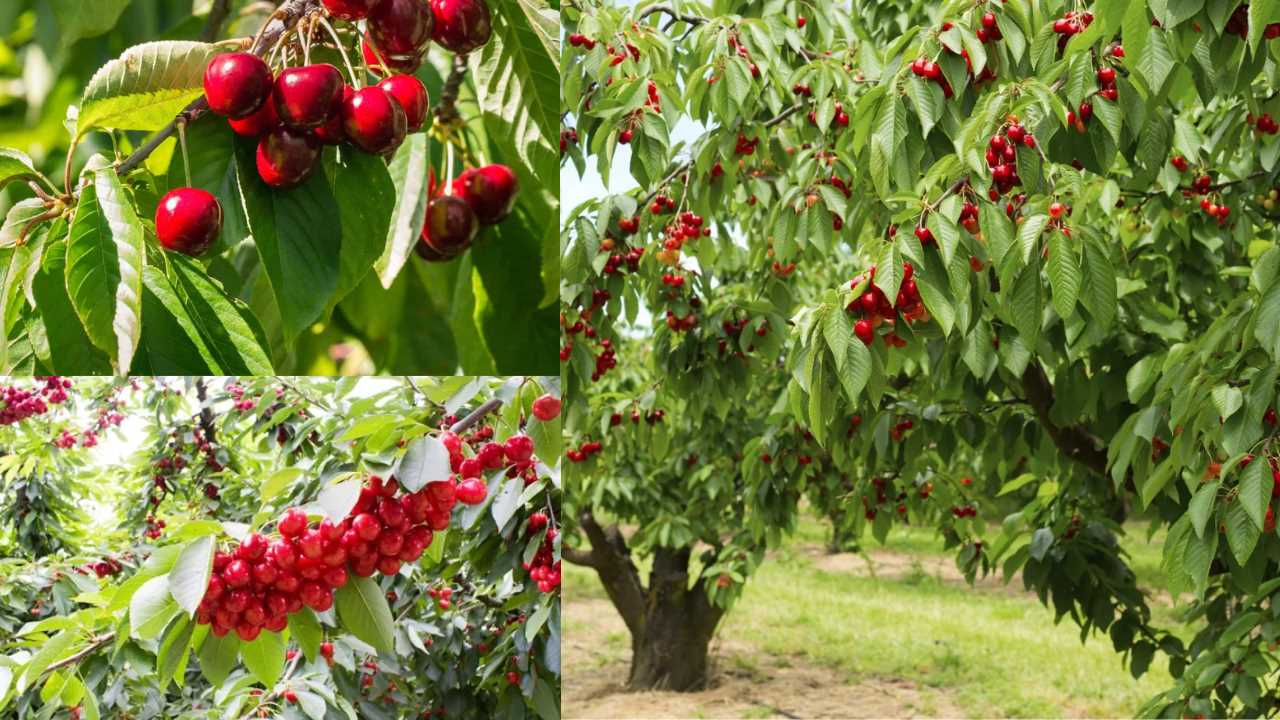
Once the cherry tree starts producing fruit, it’s important to thin out the fruit to ensure optimal growth and easier harvesting. Remove excess cherries, leaving about 6 inches of space between each fruit. This will allow the remaining cherries to grow larger and reduce the risk of branches breaking under the weight of the fruit.
4. Provide support
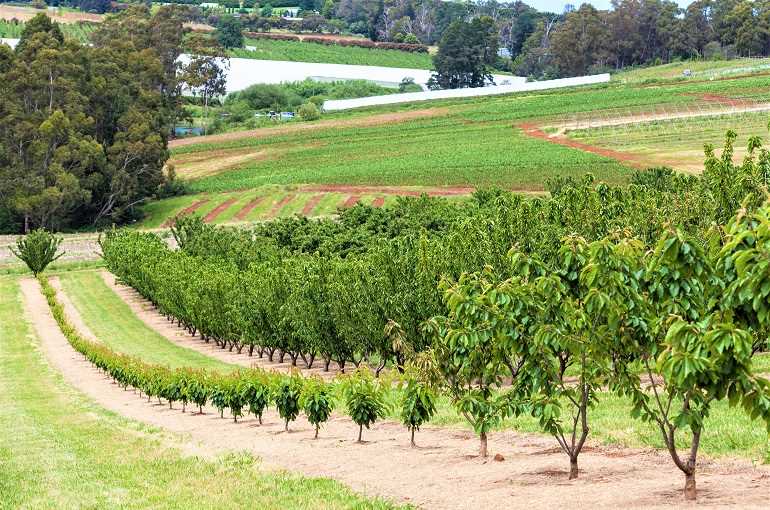
As the cherries start to ripen, provide support for the heavily-laden branches to prevent them from snapping or drooping. Use wooden planks or supports to prop up the branches and distribute the weight evenly throughout the tree. This will make harvesting much easier and minimize damage to the tree.
5. Harvesting
When the cherries are fully ripe, it’s time to harvest. With a bush-shaped cherry tree, you can simply walk around the tree and pick the cherries at a comfortable height. There’s no need for ladders or climbing, making the process much safer and faster. Use a small basket or bucket to collect the cherries as you go.
By following these steps and shaping your cherry tree into a bush, you can simplify the harvesting process and enjoy the fruits of your labor more efficiently. Happy cherry picking!
Understanding the Growth Patterns of Cherry Trees
Cherry trees have a distinctive growth pattern that is important to understand in order to successfully shape and care for the tree. By understanding the different growth stages and patterns, gardeners can ensure a healthy and productive cherry tree.
1. Seedling Stage
Cherry trees start from a seed, which eventually grows into a seedling. During this stage, the tree is vulnerable and requires careful nurturing. Seedlings need well-draining soil, adequate sunlight, and regular watering to establish a strong root system.
2. Vegetative Growth
Once the cherry tree develops a strong root system, it enters the vegetative growth stage. During this stage, the tree focuses on growing branches, leaves, and stems. Cherry trees have a natural tendency to grow upright, with multiple branches forming a central leader.
It is important to prune the tree regularly during this stage to encourage proper branching and maintain an open canopy for better light penetration and air circulation. Pruning also helps shape the tree and prevent overcrowding of branches.
3. Flowering Stage
After a few years of vegetative growth, the cherry tree enters the flowering stage. During this stage, the tree produces beautiful blossoms, which eventually transform into cherries. It is important to note that not all cherry tree varieties are self-pollinating. Some require cross-pollination from another compatible variety to produce fruit.
4. Fruit Development
Once pollination occurs, the flowers develop into cherries. The fruit development stage typically lasts several months, during which the cherries grow in size and maturity. It is crucial to provide adequate water and nutrients to support healthy fruit development.
5. Dormancy
After the fruit is harvested or drops from the tree, the cherry tree enters a period of dormancy. This is a natural rest period for the tree, during which it conserves energy and prepares for the next growing season. Dormancy is necessary for the tree’s overall health and productivity.
By understanding the growth patterns of cherry trees, gardeners can effectively shape and care for their trees at each stage. Proper pruning, watering, and fertilizing techniques can help ensure a bountiful harvest of cherries year after year.
Selecting the Right Cherry Varieties for Bush Training
When it comes to training cherry trees into a bush shape, it’s important to choose the right varieties that are suitable for this growing method. Here are some cherry varieties that work well for bush training:
- Stella: This self-fertile cherry variety is known for its large, juicy, and dark red fruits. It is an excellent choice for bush training due to its compact growth habit.
- Compact Stella: This variety is a dwarf version of Stella, making it even more suitable for growing in a bush shape. It produces the same delicious dark red cherries in a smaller size.
- Lapins: Lapins cherries are renowned for their firm texture and sweet flavor. They are self-fertile and have a vigorous growth habit, but with proper pruning and training, they can be shaped into a bush form.
- Sweetheart: Sweetheart cherries are a popular choice for bush training due to their compact growth and high productivity. The cherries have a heart shape and a deep red color, and they are exceptionally sweet and juicy.
- Black Gold: This cherry variety is known for its dark, almost black skin and rich flavor. Black Gold cherries can be trained into a bush shape as they have a somewhat spreading growth habit.
It’s important to note that not all cherry varieties are suitable for bush training. Some varieties have a more upright growth habit or require specific pruning techniques that may not be compatible with the bush shape. Therefore, it’s recommended to choose varieties that naturally have a more compact and bush-like growth habit for the best results.
Techniques for Training Cherry Trees into Bushes
Training cherry trees into a bush shape is a popular method among gardeners to simplify the harvest and manage the tree’s size. Here are some techniques for training cherry trees into bushes:
- Pruning: Prune the tree in its first year to shape it into a bush. Remove the central leader and focus on maintaining an open center by removing crowded or crossing branches. This will encourage the tree to grow outward and create a bush-like shape.
- Spacing: Plant cherry trees with appropriate spacing to allow for bushy growth. Space each tree about 10-15 feet apart to give them room to spread their branches. This will help in preventing overcrowding and encourage better air circulation.
- Branch bending: Use weights or tie-downs to gently bend the tree’s branches in different directions. This technique encourages horizontal growth, which is more conducive to bushy growth. Secure the branches in place for a few months to allow them to set in their new position.
- Regular pruning: After the initial pruning, continue to prune your cherry tree annually to maintain its bush shape. Remove any vigorous upright shoots that grow from the base of the tree and thin out any crowded branches. This will help in promoting the growth of new branches and maintaining the bushy form.
- Support: Provide support for heavy fruiting branches to prevent them from sagging or breaking. Use stakes or trellises to support the branches and ensure a successful harvest.
By implementing these techniques, you can effectively train your cherry trees into bush shapes, making them easier to manage and harvest. Remember to adapt these techniques to your specific cherry tree variety and growing conditions for optimal results.
Pruning Cherry Trees: Essential Tips for Shaping
Pruning cherry trees is a critical task for maintaining their health, shaping their growth, and maximizing their fruit production. By following essential tips for shaping, you can ensure that your cherry tree grows in an organized and productive manner.
1. Time it Right
Pruning should be done during the dormant season, typically in late winter or early spring before the buds start to break. This allows the tree to heal and recover without the risk of diseases entering through the open wounds.
2. Remove Dead and Diseased Branches
Start by removing any dead, broken, or diseased branches. These can harbor pests and diseases, and their removal promotes overall tree health.
3. Shape the Central Leader
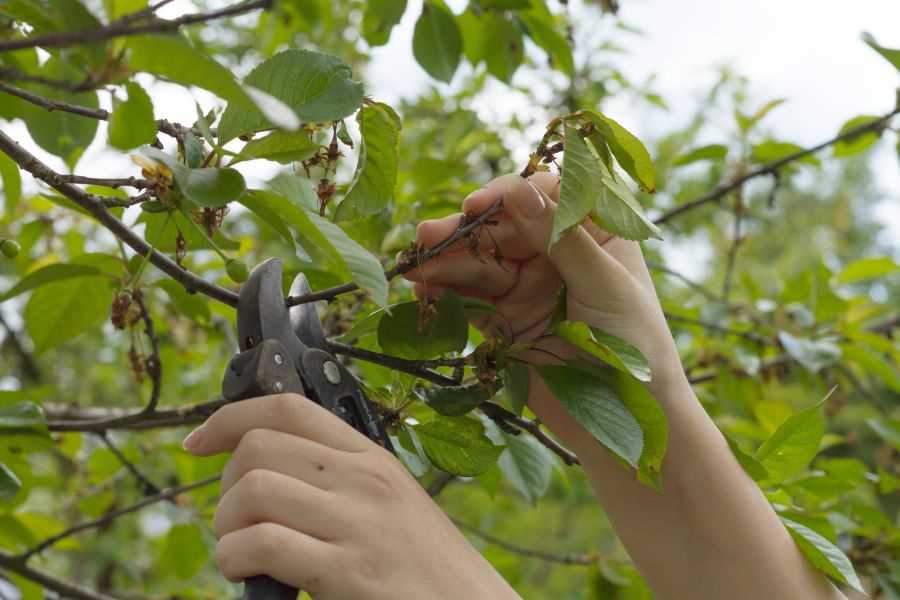
Cherry trees typically have a central leader, which is the main vertical stem. To shape the tree and prevent it from growing too tall or unevenly, prune branches that are competing with the central leader. This encourages a balanced growth structure.
4. Thin Out Overlapping Branches
Avoid overcrowding by thinning out branches that are crossing or rubbing against each other. This improves air circulation and reduces the risk of disease transmission.
5. Maintain an Open Center
Cherry trees benefit from an open center, allowing sunlight to penetrate the tree canopy and reach the lower branches. Remove branches that are growing towards the center to maintain an open and airy structure.
6. Prune for Fruit Production
When pruning for fruit production, focus on maintaining a balance between vegetative growth and fruiting wood. Be careful not to remove too much of the fruiting wood, as this can reduce the potential crop for the following season.
7. Use Proper Pruning Tools
Invest in high-quality pruning tools, such as sharp hand pruners and loppers, to ensure clean cuts without damaging the tree. Clean your tools between pruning different trees to prevent the spread of diseases.
8. Consult with Experts
If you’re unsure about how to prune your cherry tree or need guidance on specific pruning techniques, don’t hesitate to consult with local horticulturists, arborists, or fruit tree experts. They can provide valuable insights and recommendations tailored to your specific tree and growing conditions.
By following these essential tips for shaping and pruning cherry trees, you can promote tree health, improve fruit production, and enjoy a well-structured and beautiful tree in your garden.
Maintaining a Healthy Cherry Tree Bush
Regular Pruning
Pruning is an essential part of maintaining a healthy cherry tree bush. Regular pruning helps to keep the tree’s shape and size under control, as well as promoting optimal fruit production. Prune your cherry tree bush during the dormant season, before new growth begins in the spring. Remove any dead or diseased branches, as well as any branches that are crossing or rubbing against each other. Aim to create an open canopy that allows for good air circulation and sunlight penetration.
Fertilization
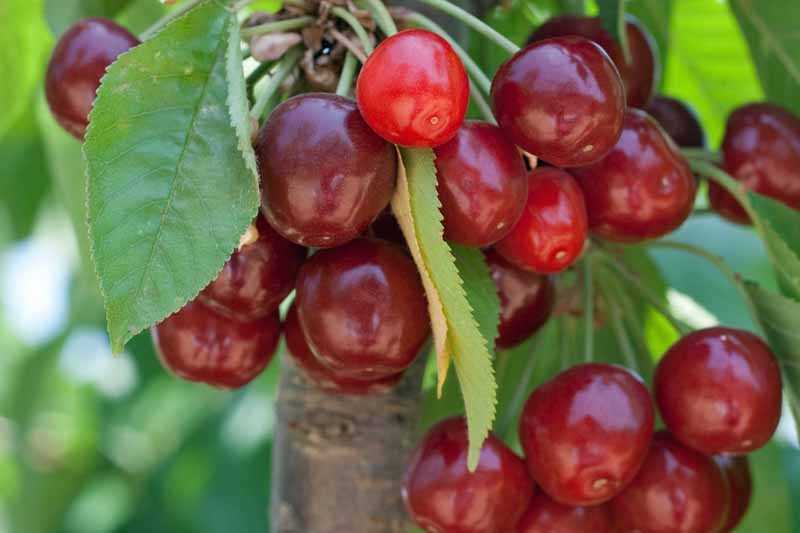
Cherry trees benefit from regular fertilization to ensure healthy growth and abundant fruit production. Apply a balanced fertilizer in early spring, just before the tree starts to bud. You can also apply a second round of fertilizer in early summer, after the tree has finished flowering. Follow the manufacturer’s instructions for the specific type of fertilizer you are using, as dosages may vary.
Watering
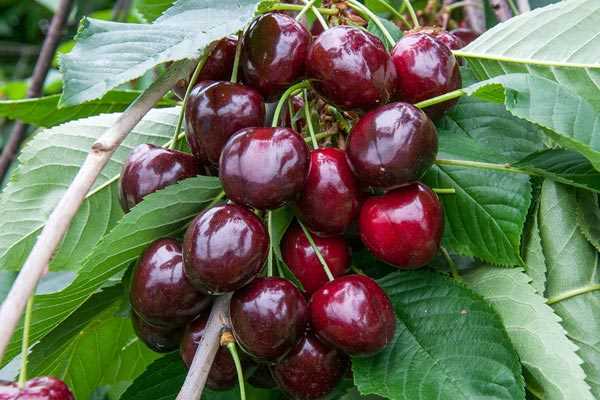
Proper watering is crucial for maintaining a healthy cherry tree bush. During the growing season, make sure the tree receives about 1-2 inches of water per week, either from rainfall or supplemental irrigation. Water deeply and evenly to encourage the roots to grow deeper into the soil. Avoid overwatering, as this can lead to root rot and other fungal diseases.
Pest and Disease Control
Regular monitoring and appropriate pest and disease control measures are important for keeping your cherry tree bush healthy. Inspect the tree regularly for signs of pests such as aphids, mites, or cherry fruit flies. If you notice any signs of infestation or disease, take action immediately. This may involve applying an insecticide or fungicide, or using organic methods such as introducing beneficial insects or spraying with a neem oil solution.
Weed Control
Keep the area around your cherry tree bush free from weeds. Weeds compete with the tree for nutrients, water, and sunlight, potentially hindering its growth. Use mulch to suppress weed growth and retain moisture around the base of the tree. Regularly remove any weeds that do manage to sprout.
Monitoring and Proactive Care
Regularly monitor your cherry tree bush for any signs of stress or problems. Look for wilting leaves, discolored foliage, or any other unusual signs. Investigate and address the issue promptly to prevent further damage. Take proactive care of your cherry tree bush by providing it with appropriate care, such as mulching, watering, and fertilizing, to promote overall health and vitality.
By following these guidelines for maintaining a healthy cherry tree bush, you can ensure that your tree remains strong, productive, and beautiful for years to come.
Reaping the Rewards of a Well-Shaped Cherry Tree Bush
A well-shaped cherry tree bush not only enhances the aesthetic appeal of your garden but also makes the harvest process much simpler and more efficient. By shaping the tree into a bush, you can create a compact and manageable structure that allows for easy access to the cherries and promotes better air circulation, resulting in healthier trees and higher yields.
One of the main advantages of a cherry tree bush is the ease of harvesting. With a compact and low-growing structure, the cherries are within reach without the need for ladders or special equipment. This can save both time and effort during the harvest season, making the process more enjoyable and efficient.
A bush-shaped cherry tree also allows for proper air circulation within the canopy. Pruning the branches and shaping them into a bush-like form helps to open up the center of the tree, allowing sunlight and airflow to penetrate all parts of the tree. This reduces the risk of diseases and pests and promotes healthier growth and fruit development.
Pruning and shaping a cherry tree into a bush can also help to control the size and growth of the tree. By regularly trimming the branches and controlling their direction, you can prevent the tree from becoming too tall or spreading out excessively. This makes it easier to fit the tree into smaller spaces or gardens and provides better control over the overall shape and form of the tree.
Additionally, a well-shaped cherry tree bush can enhance the overall appearance of your garden. The compact and symmetrical form of a bush-shaped cherry tree adds visual interest and can be an attractive focal point in your outdoor space. With beautiful blossoms in spring and a bountiful harvest of cherries in summer, a well-maintained cherry tree bush will be a source of pride and enjoyment.
In conclusion, shaping your cherry tree into a bush not only simplifies the harvest process but also promotes healthier growth, enhances the appearance of your garden, and provides better control over the size and shape of the tree. By reaping the rewards of a well-shaped cherry tree bush, you can enjoy a bountiful harvest of delicious cherries and create a visually stunning landscape.
Question-answer:
What is the best way to shape a cherry tree for simplified harvesting?
The best way to shape a cherry tree for simplified harvesting is to train it as a bush. This involves pruning the central leader and allowing the tree to grow multiple main branches from near the base of the trunk. These main branches should be spaced about 8-12 inches apart and trained to grow in a more horizontal or slightly angled position. This allows for better light penetration and air circulation, which helps prevent diseases and ensures even ripening of the fruits.
When is the best time to start shaping a cherry tree as a bush?
The best time to start shaping a cherry tree as a bush is in late winter or early spring, before the tree starts to bud and grow leaves. This allows for better visibility of the branches and makes it easier to prune and shape the tree. It is important to start shaping the tree when it is young to establish the desired structure and encourage the growth of multiple main branches.
What are the benefits of shaping a cherry tree as a bush?
Shaping a cherry tree as a bush has several benefits. Firstly, it simplifies the harvesting process as the fruits are at a more accessible height, making it easier to pick them. Secondly, it promotes better light penetration and air circulation through the canopy, which reduces the risk of diseases and ensures even ripening of the fruits. Additionally, shaping the tree as a bush allows for better space utilization, as multiple trees can be planted in a smaller area compared to traditional tree forms.
How should I prune a cherry tree to shape it as a bush?
To prune a cherry tree and shape it as a bush, start by removing the central leader or main vertical branch. This will encourage the growth of multiple main branches from near the base of the trunk. These main branches should be pruned to have a slightly angled or horizontal growth pattern, spaced about 8-12 inches apart. Remove any competing branches or branches that grow inward. Make clean cuts just outside the branch collar, and avoid cutting too close to the trunk. Regular pruning and training will be necessary to maintain the desired shape and structure.
Can any type of cherry tree be shaped as a bush?
Most types of cherry trees can be shaped as a bush, but some varieties may be more suitable than others. It is important to choose cherry tree varieties that have a naturally bushy growth habit and are well-suited for training as a bush. Some popular cherry tree varieties for bush training include Stella, Lapins, Van, and Kristin. However, it is recommended to consult with a local nursery or horticulturist to determine the best cherry tree varieties for your specific location and climate.







